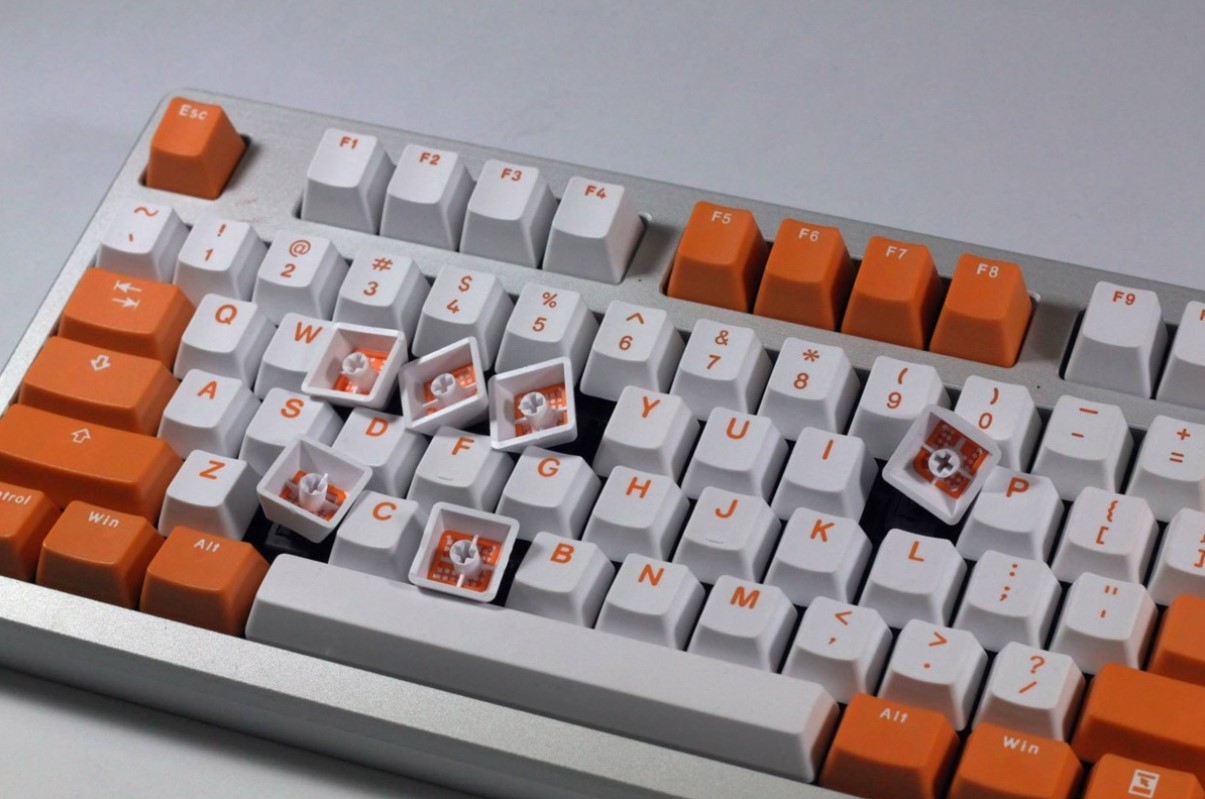What is a Planck Keyboard, and how does it work? Is there a count of how many keys it has?
Have you ever felt like your keyboard has too many keys? The distance between keys can cause a lot of strain on the fingers, especially if you have to stretch them repeatedly. There has to be a way out of this predicament.
Planck keyboards provide a feasible alternative.
You may be wondering what a Planck keyboard is and how it functions. That is, after all, what we are here to discuss today.
Planck Keyboards, their layout, benefits, types, and everything in between will be discussed in this article. So, if you want to learn more about these incredible keyboards, make sure you read this article all the way to the conclusion.
What is a Planck Keyboard, and how does it work?
A Planck keyboard is a 40 percent ortholinear keyboard with only the proper number of keys arranged in a rectangular layout of rows and columns with non-staggered keys. There’s a reason why Planck keyboards don’t have any printing or legends on them.
These keyboards are to meet the ergonomic needs of typists, and niche mechanical keyboard fans all over the world love them. If you take a look at them, you’ll see that they’re great in terms of design, adaptability, and general attractiveness.
Planck Keyboards are available in a variety of styles.
Planck Keyboards are divided into two categories, based on the style of layout. However, there aren’t many differences between them – in fact, only one. So let’s take a closer look.
GRID DESIGN
Every key in this layout is the same size, including the Spacebar, implying that there are no distinctive features and that any key can be used interchangeably.
MIT Design
This is a unique situation. Except for a single key, every key in this arrangement is a single unit. The spacebar key is slightly larger than the other keys – around two units for a single key. This also aids in identifying the left and right sides of the keyboard, which is cool.
What Is the Number of Keys on a Planck Keyboard?
A Planck keyboard has four rows and twelve columns of single-unit keys. However, depending on the arrangement you choose, the number of keys may vary.
In the GRID layout, you’ll find 48 single-unit keys that may be programmed to accomplish the exact task you need, which, in my opinion, is fairly impressive for Planck Keyboards.
The MIT layout, on the other hand, has 47 keys since the spacebar key is a double unit key. When it comes to the number of keys on a Planck keyboard, that’s about it.
Planck Keyboard Characteristics
Let’s look at some of the unique characteristics that a Planck Keyboard is known for.
- Programmability — Every key on the Planck keyboard may be reprogrammed in any way. You don’t have to be concerned about the assignment. If you know how to use the QMK program, you can equip whatever layout works best for you. That is critical.
- Macros – Macros are essentially key combinations that allow you to perform repetitive tasks quickly. They’re similar to templates, but they’re for your keyboard. With this high-quality keyboard, you can easily develop macros that you want. Without a doubt, it is one of the nicest aspects of this keyboard.
- Sound Emittance – If you want to have some fun with the Planck Keyboard and muck around with it, you have plenty of alternatives. Because there is an inbuilt speaker in the keyboard frame, you can make the keyboard emit sound using firmware functions, which is very cool.
- QMK Support – Quantum Mechanical Keyboard is an open-source platform that allows users to alter and configure keyboards to their liking. The Planck Keyboard supports this program, and you can use it to personalize your keyboard as much as you like. This is a terrific feature, and I’m sure you’d enjoy messing around with it.
Planck Keyboard Advantages
Now that we’ve learned about the features of a Planck keyboard, let’s look at some of the advantages before making our ultimate decision.
- Ergonomics is the study of how people work. Ortholinear keyboards are designed for simplicity of use first and foremost. You can always keep your fingers within two rows of keys from the Home row, which has the ASD and other keys in a conventional QWERTY keyboard layout, instead than stretching your fingers and hands.
- Effortlessness – The Planck Keyboard is only 40% the size of a standard keyboard. There are no unnecessary functions, Num keys, or arrow keys. However, if you want to achieve the functionality you want in this keybo, you can utilize the QMK program.
- Durability — In most cases, the keyboard is made up of a metal frame, a PCB, and a metal switch plate. This keyboard has a very high level of durability. If you’re thinking about getting it for your computer setup, it’ll last a long time.
- Freedom of Customization — With the QMK platform and other software tools, you can genuinely personalize a lot of your keyboard, which I think is very cool. You can also desolder and replace the switches, which isn’t possible on a lot of keyboards.
Conclusion
The Planck Keyboard is incredibly cool, and it’s a breakthrough ergonomic keyboard that was recently designed. So, if you’re a fan of basic graphics with powerful functionality, you should absolutely invest in a good Planck Keyboard and have a great time with it!
Wanna see more beautiful and reasonable custom keycaps? Visit our website https://keycapscustom.com/

